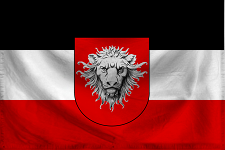Earth II
New Thread Announcement Form
Please fill out the form below to announce a new thread. You should list yourself as the Thread Owner unless this a joint-effort. Then please list all owners alphabetically. Location should be a three step process: Continent, Region, Specific Location. For "Continent" and "Region" please refer to and use the regions listed on our Threads post. The Classification Tag(s) should include one, some, or all of the following and any additional tags you wish to cite: "Claim," "Introduction," "NPC," "Story," "War." The Synopsis should include a brief summary in two or three sentences about the thread and lastly the Miscellaneous Notes should include any OOC comments. If there is an OOC Thread attached, link it here and also advise if this thread is "Closed" as in it is a story.
- Октя́брьская револю́ция
- Thread Owner(s): Pyschotika
- Location: Russia/Cotland
- Classification Tag(s): Open
- Synopsis: Thread following the conclusion of the Fourth Russo-Cottish War; Rise of the Revolution; Eventual war between Cottish elements and Russian Reds in a very odd twist of events; Inevitable evacuation of the Romanov's (no murderino in this reality)
- Miscellaneous Notes: This will need to be a collab between Cotland and I, it's based out of a stricken bit of history that was dated for October 15th, 1915. Through this, we should see a bit more established history from 1915 onward - with potential collabs later I hope to establish other history prior to 1915.







